Whenever you enter the Rose Artwork Museum’s principal gallery, one of many first belongings you’ll see is a wood chair with instruments sprouting out of it in all instructions: backyard shears, a rusty pitchfork, an extended ax.
“A lot of them are sharp, a lot of them can wound you,” Rose Museum director Gannit Ankori mentioned as we walked by “Hugh Hayden: Residence Work” on the eve of the exhibit’s opening earlier this fall. We handed the menacing instrument chair – a bit known as “Ending College” – and had been confronted by two rows of college desks with big tree limbs rising out of them, a classroom that appeared to rework earlier than our eyes right into a thicket of bushes. One other pair of desks had been lined throughout within the coarse bristles of a cleansing brush, showing directly mushy and unusual.
“They appear like little animals,” Ankori noticed. “A variety of [Hayden’s] work is surreal in that it metamorphoses into one thing that is alive, that is animated, and it is form of freaky in a approach, however humorous in a approach.”
The unsettling mixture of threatening and alluring is on dizzying show all through the Rose’s survey of Hayden’s prolific final decade: a child’s crib lined with thorns, basketball hoops woven from human-like hair, a Burberry coat lined in tree bark. The objects evoke visceral reactions, however on nearer inspection appear to supply a wry critique of American life.
The gathering of unusually disfigured faculty desks – Ankori known as it an “uncanny classroom” – was designed to create uneasy resonances with the exhibit’s location at an American college.
“The concept of upper training as being a pathway in the direction of attaining the American dream is form of explored, examined, and undermined, and questioned,” Ankori mentioned. “So, this type of chair, this type of desk, this type of classroom, you can’t inhabit, you can’t actually sit right here.”
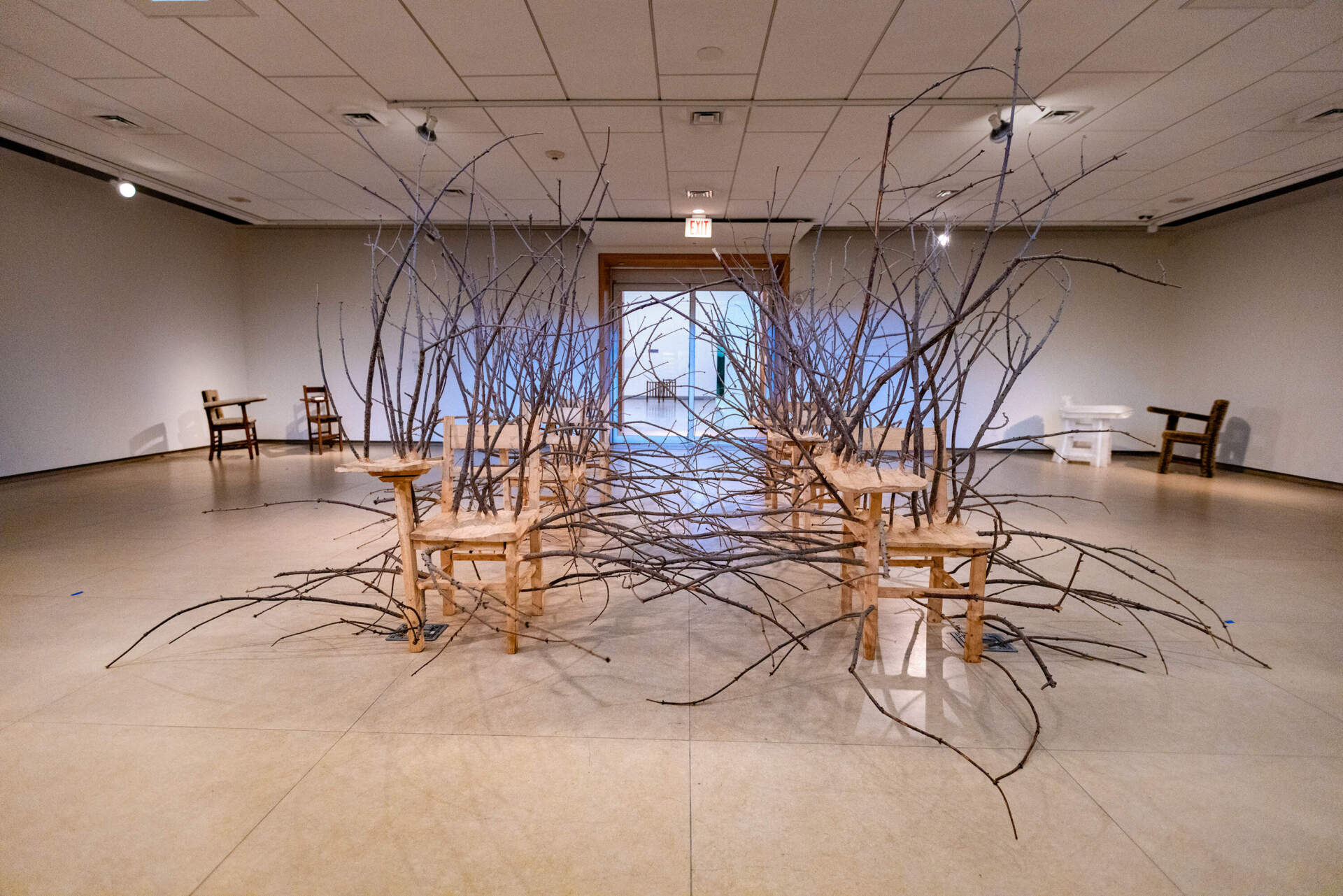
The exhibit, which was curated by Ankori and the deCordova Sculpture Park and Museum’s Sarah Montross, gives a probing take a look at Hayden’s physique of labor because the 41-year-old artist rides a surge of admiring protection for his giant, surreal installations. The thicket of tree department desks, as an illustration, is a smaller model of a much-lauded set up that appeared in New York’s Madison Sq. Park in 2022, known as “Brier Patch.”
However “the pièce de résistance,” Ankori mentioned, “is ‘Hedges.’”
As we stepped into the following part of the gallery, we had been confronted with maybe Hayden’s most well-known piece, on show for less than the second time because it debuted in 2019 at The Shed in New York. “Hedges” is a large wood mannequin of a home, its facade sprouting with lengthy tree limbs like a porcupine. Giant mirrors on both aspect of the set up created the phantasm of an infinite row of equivalent homes – a prickly problem to the notion of residence possession as equally accessible to all. The impact was menacing.
“It is a typical suburban residence that appears acquainted,” Ankori mentioned. “However then is horrifying and threatening and uncanny.”
There was that phrase once more: uncanny. It is not uncommon to listen to folks describe Hayden’s work in alien phrases. However the Texas-born artist sees these reactions as proof of one thing like empathy.
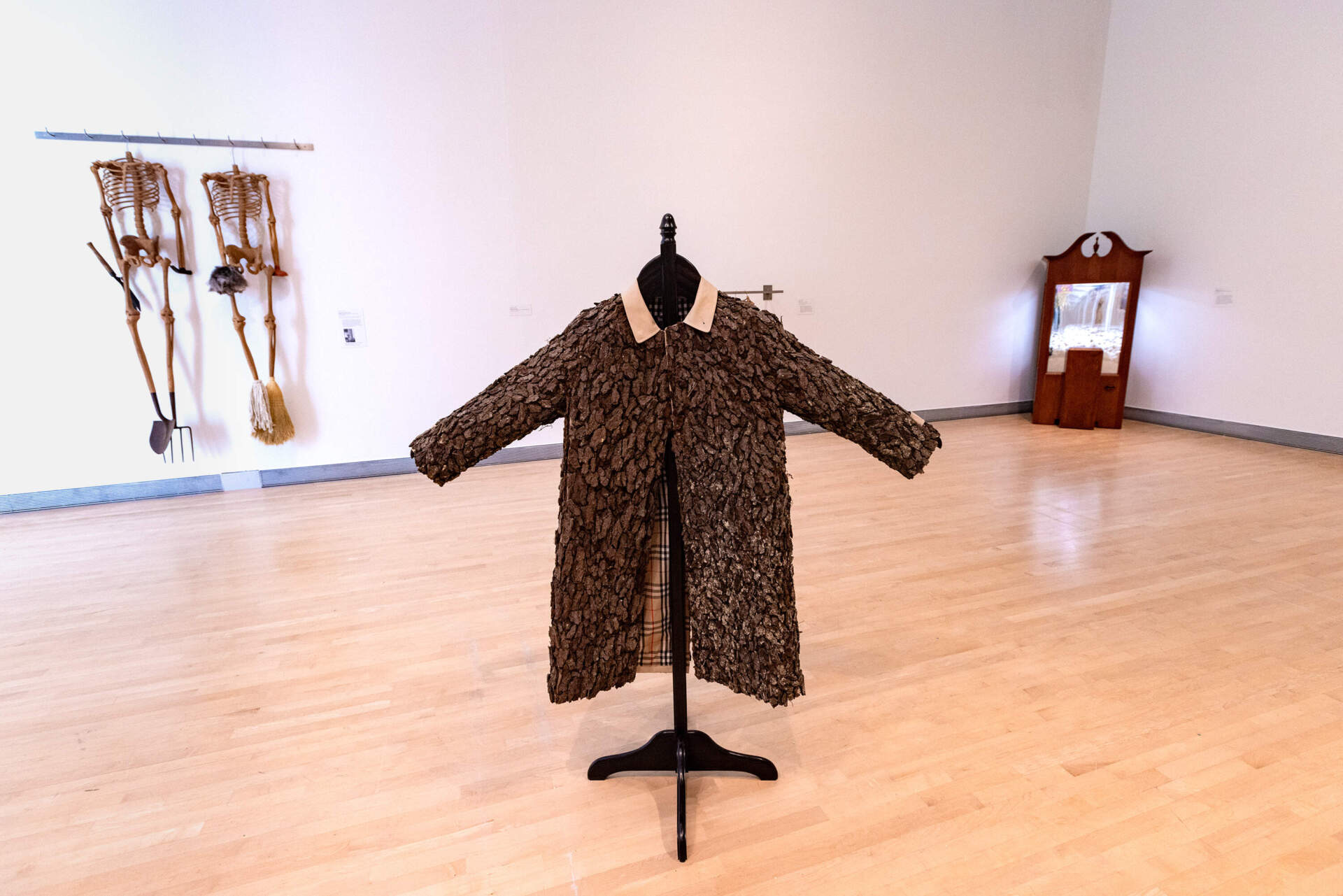
“Typically turning into aware of the lived expertise of one other particular person, and the absurdity or issue is so international to you, that that that’s your response,” Hayden mentioned in an interview on a go to to Boston for the Rose exhibit opening. “That it is humorous or that it is uncanny.”
Hayden is a gregarious conversationalist who laughs simply and speaks in whimsical tangents. However his work betrays an uncommon degree of focus and a spotlight to element. The artist was employed for a time as an architect, and brings comparable rigor to his sculptures. His items are painstakingly handcrafted, such {that a} tree department or thorn protruding from a bit of furnishings is an natural development, with no {hardware} or seams to mar the impression of wholeness.
Lately, Hayden has turned his consideration to the human type, carving beautiful wood replicas of the human skeleton, although all the time altered in some sudden or unsettling approach. One of many latest sculptures on show on the Rose, “American Gothic,” options two skeletons aspect by aspect in an absurdist riff on the famed portray by Grant Wooden, their limbs morphing into instruments used for home or yard work – a shovel, a feather duster, a rest room plunger.
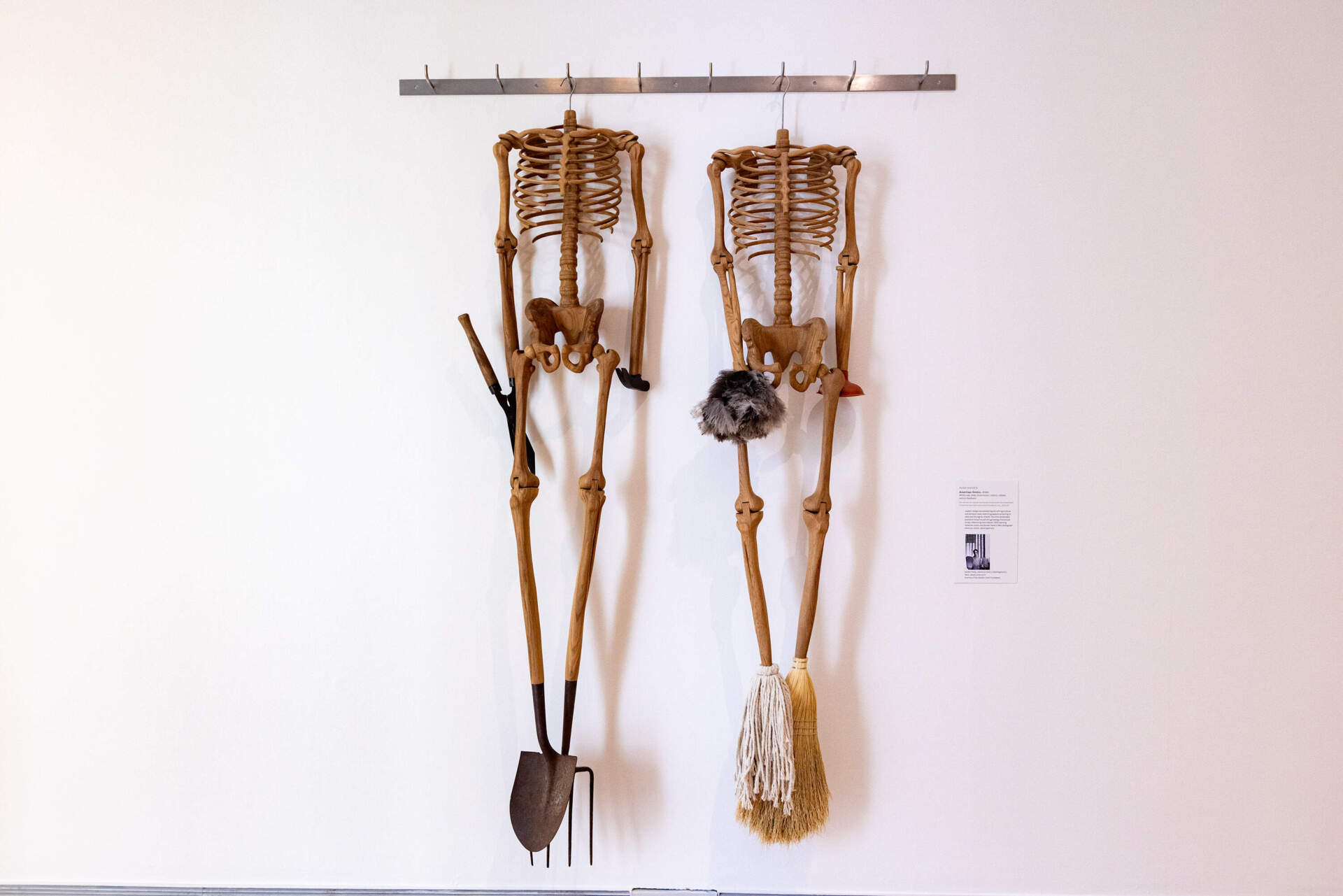
Hayden acknowledged that the piece may strike some as humorous or macabre. However he defined that he favored skeletons as a result of they functioned as a form of clean canvas.
“For the common viewer, [a skeleton] has no id,” Hayden mentioned. “It has no gender, has no race, has no faith. It has no sexual orientation.”
Hayden, who’s Black, regularly makes work that engages with race and masculinity. However he resists readings of his artwork which are strictly associated to his id.
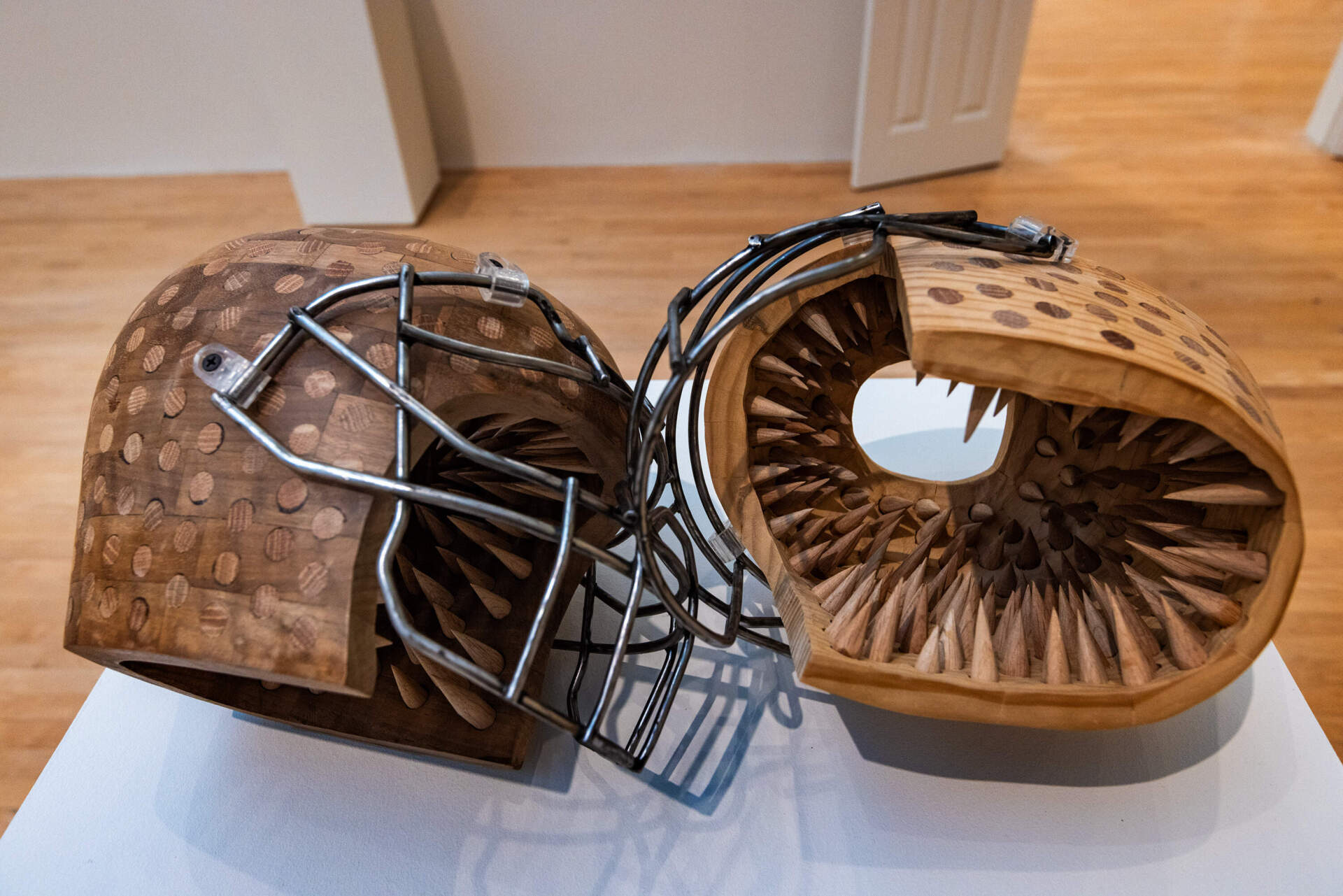
“To somebody who’s actually tuned in to what my work is about, they could see all this stuff which are extra autobiographical within the work,” Hayden mentioned. “However there are different individuals who can say, ‘Oh, that is like me. That is my grandmother. That is so-and-so.’”
Hayden provided that his expansive method most likely got here from his background as an architect, a job that required him to design public buildings that might be welcoming to everybody. He appeared to experience the concept two folks may take a look at one in all his artworks and are available to fully opposing conclusions about its which means — even when it was commenting on a sizzling button difficulty, like policing in America. He famous that he’d acquired criticism that his personal viewpoint wasn’t all the time obvious in his work.
“I usually do have a aspect I’d … most likely be extra inclined in the direction of,” Hayden mentioned. “However I believe, additionally, a few of the loopy great thing about this nation is 2 folks could possibly be trying on the similar factor, and have polar completely different views … they usually’re liking it for various causes.”
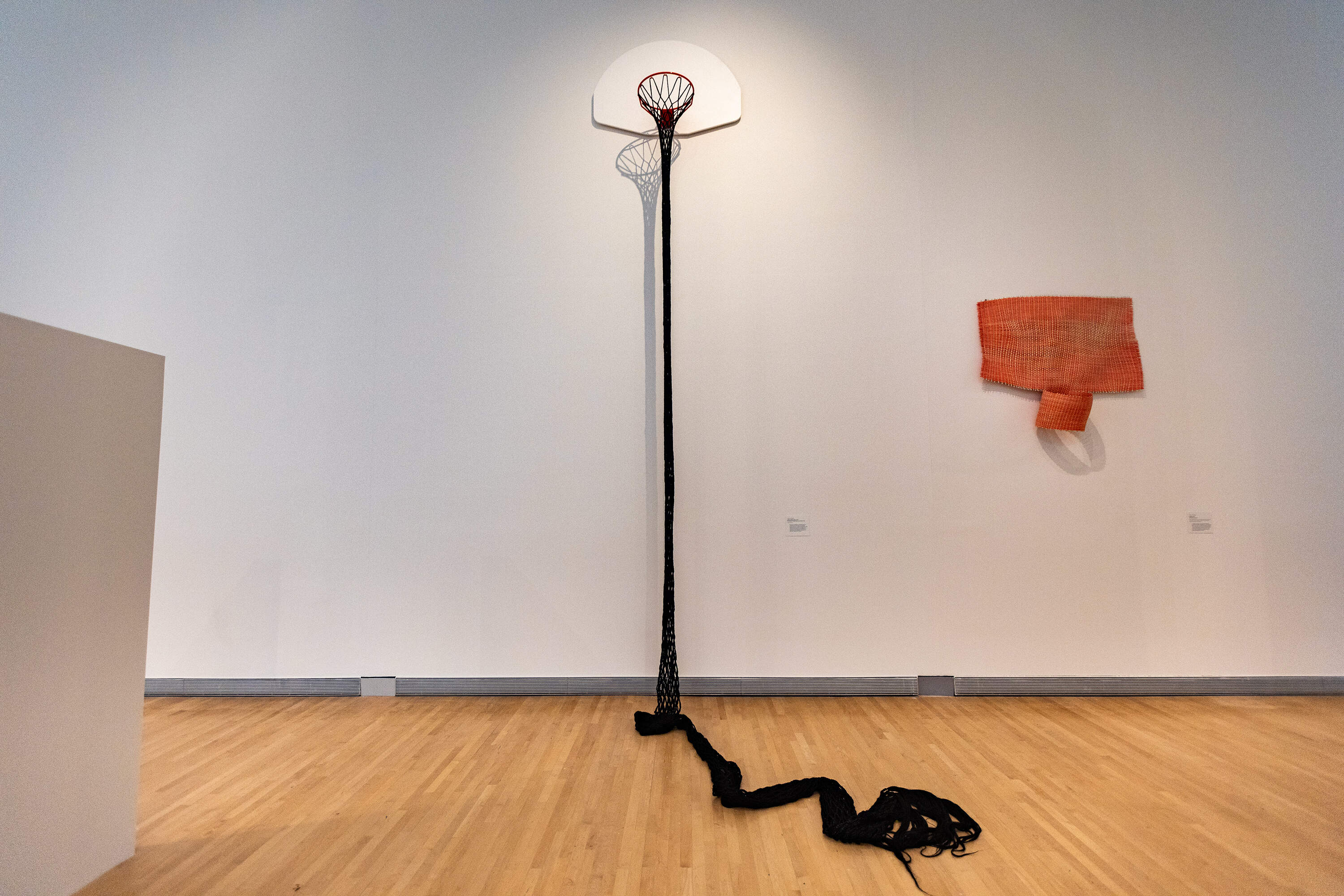
Seeing work from the total sweep of his decade-long profession multi function place on the Rose has induced its personal shift in perspective. A few of Hayden’s older items make him cringe now. Others simply look completely different on the partitions of the museum – like one sculpture, a basketball hoop woven from greenbriar vines, titled “Payment-fi-fo-fum.” A scraggle of briars cascades downwards from the backboard like a walrus mustache.
“It is proven up increased on the wall than I had proven it when it was in a gallery present,” Hayden mentioned. “So it takes the peak and the type of this form of drooping, bushy basketball purpose.”
It reminds him of a crucifix up there on the wall. One thing about seeing the piece in a brand new context, he mentioned, had reworked it into one thing else.
“Hugh Hayden: Residence Work” on the Rose Museum is on view by June 1, 2025.

